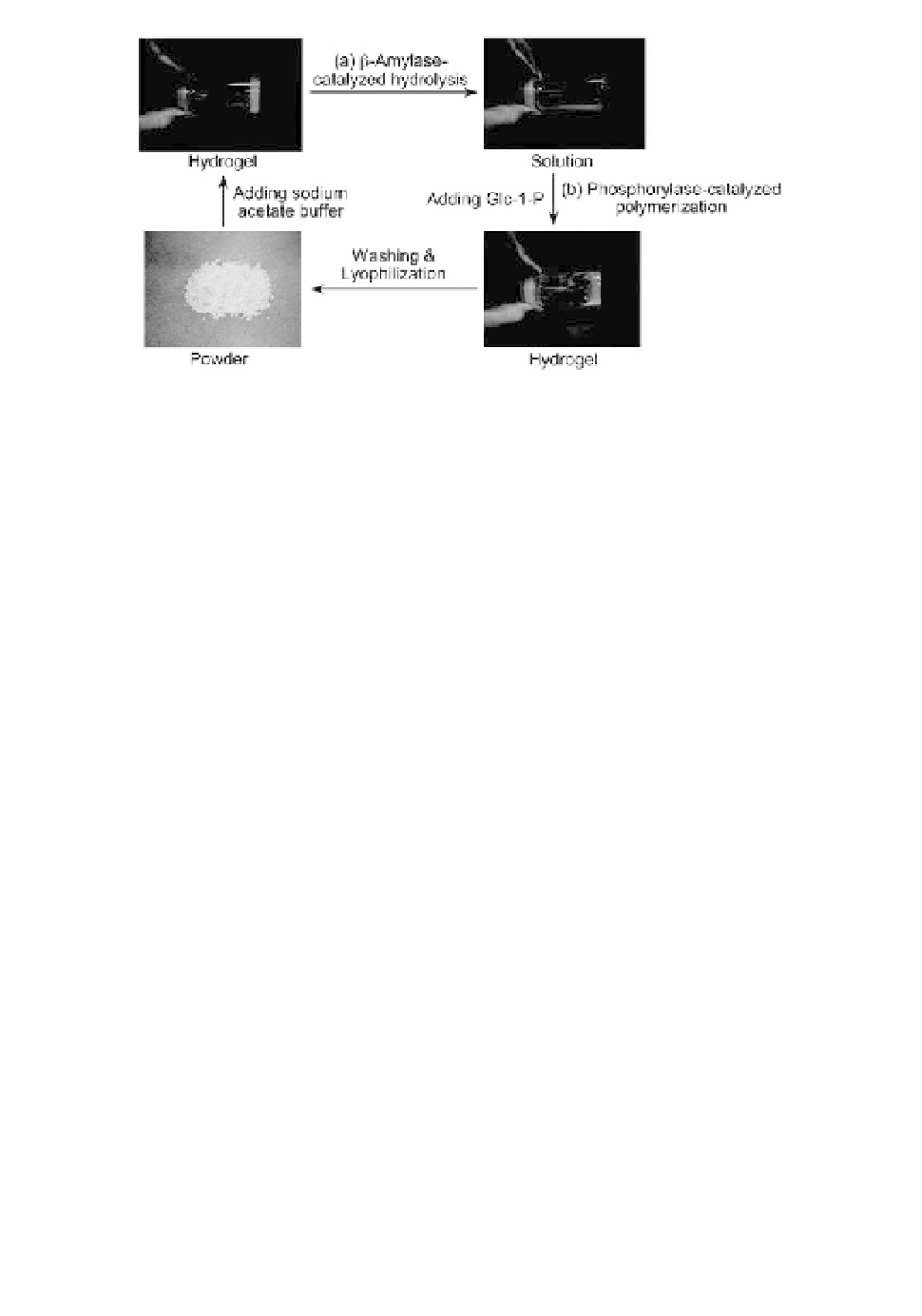Biology Reference
In-Depth Information
Figure 8.10
Cycle of enzymatic disruption (a) and reproduction of the
hydrogel by two enzyme-catalyzed reactions.
the polymerization process. During the enzymatic polymerization,
the produced amylose included the PVL graft chains in the
intermolecular guest copolymers. Therefore, the formed inclusion
complexes acted as the cross-linking points for the formation of the
hydrogel. Furthermore, the enzymatic disruption (Fig. 8.10a) and
reproduction of the hydrogels (Fig. 8.10b) were achieved by the
combination of the
-amylase-catalyzed hydrolysis of the amylose
component and the formation of amylose by the phosphorylase-
catalyzed polymerization. Therefore, it should be noted that the
present hydrogel exhibits the enzymatically recyclable behavior by
means of the two enzyme-catalyzed reactions.
β
References
1. Kaneko, Y., Beppu, K., and Kadokawa, J. (2007). Amylose selectively
includes one from a mixture of two resemblant polyethers in vine-
twining polymerization,
Biomacromolecules
,
8
, pp. 2983-2985.
2. Kaneko, Y., Beppu, K., Kyutoku, T., and Kadokawa, J. (2009). Selectivity
and priority on inclusion of amylose toward guest polyethers and
polyesters in vine-twining polymerization,
Polym. J.
,
41
, pp. 279-286.
3. Kadokawa, J., Kaneko, Y., Nagase, S., Takahashi, T., and Tagaya, H. (2002).
Vine-twining polymerization: Amylose twines around polyethers
to form amylose-polyether inclusion complexes,
Chem. Eur. J.
,
8
, pp.
3321-3326.

